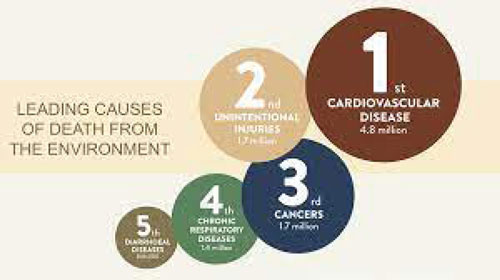CARDIOVASCULAR diseases (CVDs) are the leading cause of death around the world.
The mitigation of CVDs has typically focused on making individual lifestyle changes.
However, some environmental factors — such as pollution and climate change — also significantly contribute to a person’s risk of developing CVDs.
Experts argue that gaining a better understanding of this link is crucial to reducing the burden of CVDs.
In a new review, researchers make clear the effects of the environment on people’s risk of developing CVDs.
The research, which now appears in the journal Cardiovascular Research, also suggests mitigation strategies that could help reduce the global burden of CVDs.
According to the World Health Organization (WHO)Trusted Source, CVDs are the leading cause of death globally. They claim the lives of around 17.9 million people each year.
CVDs affect the blood vessels and heart. They increase the risk of heart attack and stroke, which account for 4 out of every 5 deaths due to CVDs.
The WHO notes that a person is more likely to develop a CVD if they:
These behaviors can lead to hypertension, high blood sugar levels, overweight, and obesity. In turn, these conditions can increase the risk of developing a serious CVD.
A key way to reduce the risk of developing CVDs is by reversing or reducing these risk factors.
However, researchers are becoming increasingly aware of the role that environmental factors also play in the risk of developing CVDs.
Medical News Today spoke with Prof. Aruni Bhatnagar, a professor of medicine and Distinguished University Scholar at the University of Louisville School of Medicine in Kentucky. Prof. Bhatnagar is an expert on CVDs.
Prof. Bhatnagar, who was not involved in the new review, said that it was crucial that we take environmental risk factors for CVDs seriously.
“Because 70–80% of CVD and diabetes [cases] are due to environmental factors, we can significantly diminish the risk of these diseases only if we identify and understand the environmental factors that contribute to them.”
“Traditionally,” added Prof. Bhatnagar, “we have focused on reduction of risk factors by behavior modification and lifestyle changes, but these approaches have limited efficacy.”










